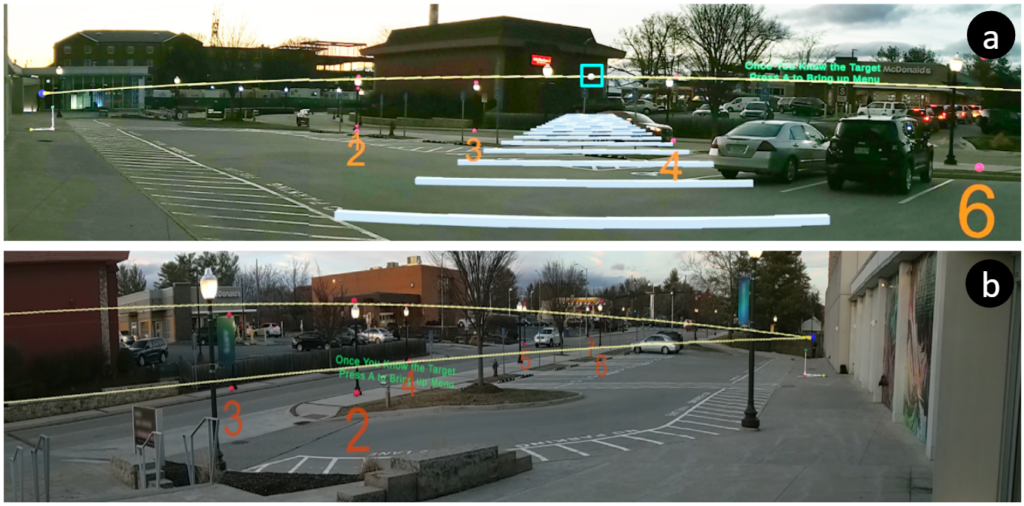
Referencing objects of interest is a common requirement in many collaborative tasks. Nonetheless, accurate object referencing at a distance can be challenging due to the reduced visibility of the objects or the collaborator and limited communication medium. Augmented Reality (AR) may help address the issues by providing virtual pointing rays to the target of common interest. However, such pointing ray techniques can face critical limitations in large outdoor spaces, especially when the environment model is unavailable. In this work, we evaluated two pointing ray techniques for distant object referencing in model-free AR from the literature: the Double Ray technique enhancing visual matching between rays and targets, and the Parallel Bars technique providing artificial orientation cues. Our experiment in outdoor AR involving participants as pointers and observers partially replicated results from a previous study that only evaluated observers in simulated AR. We found that while the effectiveness of the Double Ray technique is reduced with the additional workload for the pointer and human pointing errors, it is still beneficial for distant object referencing.
Journal Articles
Evaluation of Pointing Ray Techniques for Distant Object Referencing in Model-Free Outdoor Collaborative Augmented Reality Journal Article
In: IEEE Transactions on Visualization and Computer Graphics, vol. 28, no. 11, pp. 3896–3906, 2022.
